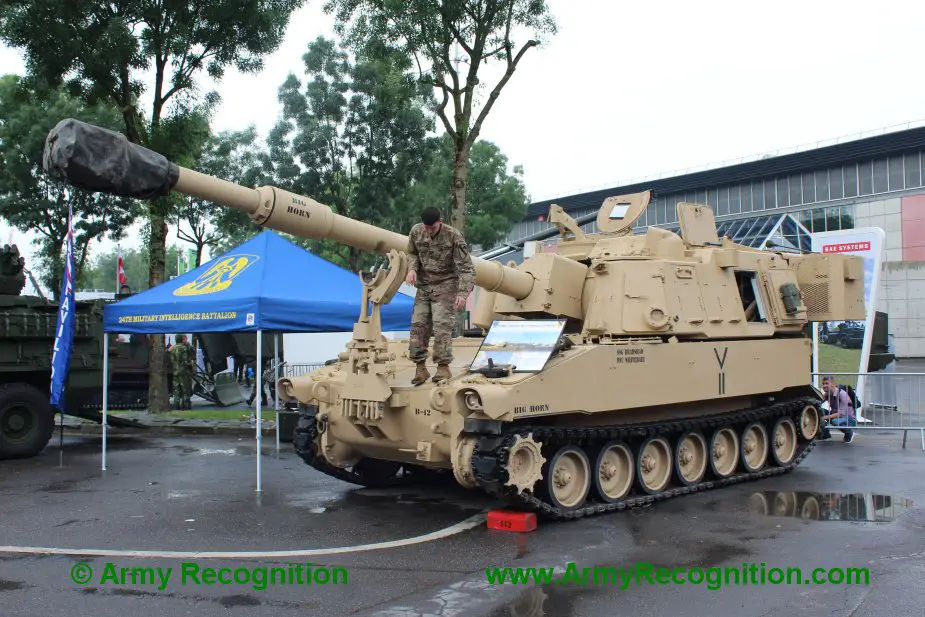Breaking news
Picatinny organization recognized for high quality weapon systems software.
The Fire Control Systems & Technology Directorate (FCSTD) at Picatinny Arsenal has been selected for a prestigious award that recognizes outstanding achievements in improving an organization's ability to create and evolve high-quality software-dependent systems, Edward Lopez reports on U.S. Army’s website. The IEEE Computer Society and the Carnegie Mellon University Software Engineering Institute (SEI) named the directorate as the winner of the 2018 IEEE Computer Society/SEI Watts S. Humphrey Software Process Achievement Award.

M109A6 Paladin displayed by the U.S. Army at Eurosatory 2018 (Picture source )
FCSTD is primarily chartered to initiate and conduct engineering development, prototyping, production, sustainment engineering and product improvement for fire control systems and subsystems--both hardware and software--for assigned mission systems. The directorate is part of the Weapons and Software Engineering Center, which is part of the U.S. Army Combat Capabilities Development Command Armaments Center.
"The incredible honor of having received the coveted Watts Humphrey award, validates at the highest levels, the discipline and dedication put forth by CCDC Armament Center leaders and employees alike, in achieving this goal," said Cynthia Perazzo, executive director, Weapons and Software Engineering Center.
Victor Elias, a process assurance representative at the fire control directorate, noted the contributions of other partner organizations at the Armaments Center: the Quality Engineering and System Assurance Directorate; the Armament Software Engineering Center; and the Tactical Effects, Protection & Interactive Technologies Directorate. "Everyone in the FCSTD and in our partner organizations--QE&SA, ASEC, and our newest partner, the TEPIT directorate--contributed to creating a great, process focused, a culture which is committed to making great products and services for the warfighters we support," Elias said. "As our processes and operational efficiency evolved, we enjoyed significant improvements in product and service quality, and adherence to cost and schedule estimates," he added.
A cost savings example is the effort by the Paladin Howitzer product team to focus on software defect management, which captures defects earlier in software development. This process saved several million dollars in defect remediation costs in late, life-cycle phases.
The fire control system on the Paladin Howitzer is an example of why robust, reliable software is critical in battle. The term "fire control" refers to a system that creates a solution to aim a weapon system to fire a projectile on target. The Paladin fire control system software integrates data from a Fire Direction Center to rapidly calculate the factors needed to achieve precise firing. A firing solution is best when information such as wind speed and direction, air temperature, air density, weapon and target coordinates, and ballistic properties for the weapon and ammunition are known.
Software and software systems working together and communicating near real-time data make firing a modern weapon system a very high-tech challenge. This is especially the case for the Paladin, an indirect fire system, which fires at targets that the gunners may not even see because they are separated by great distances, terrain or other obstacles.



















